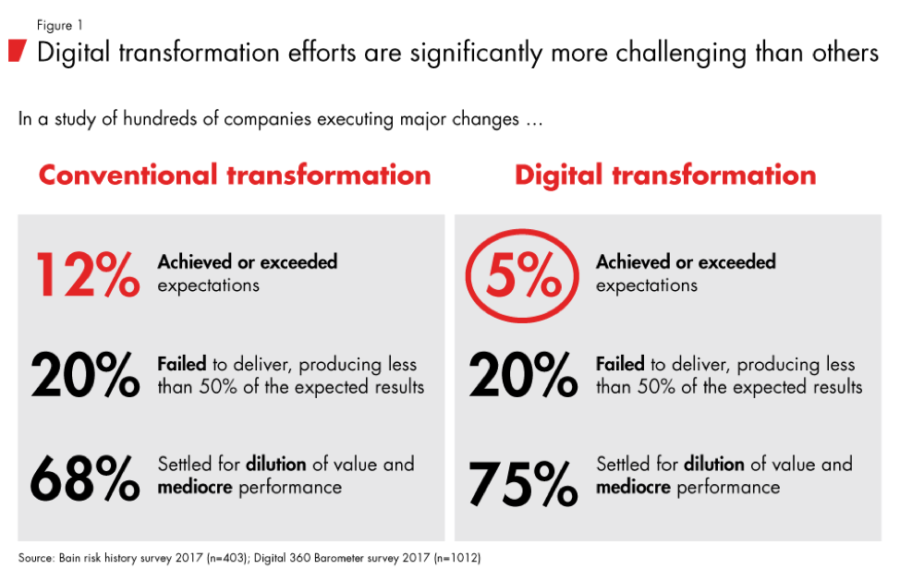Businesses today have to face the stark reality that they need to go digital or risk irrelevance. Consumers have grown quite dependent on digital tools that they perform most day-to-day tasks through mobile and computing devices. If your operation lags behind in digitization or if you don’t have a digital presence, then your business is likely to struggle in this environment.
As such, today’s business leaders need to take digital adoption quite seriously. The efficiencies that digital solutions bring are shown to positively impact the bottom line at the companies that actually use them. Digital leaders report better customer satisfaction and improved productivity compared to companies that shy away from digital solutions.
However, companies of all sizes still struggle to make their digital adoption efforts stick. Large enterprises have to manage inertia, as employees tend to resist embracing new tools and adjusting to new processes. On the opposite end, smaller ventures often lack the resources to make sweeping changes and acquire solutions wholesale. These challenges are among the reasons why just 5% of enterprises report meeting or exceeding their expectations when it comes to digital transformation.

1. Unburden Your Staff
When launching digital adoption efforts, it’s only natural as business owners and leaders to focus on areas that you believe will have immediate and direct impact on your figures. For instance, you may be drawn to invest in digital marketing efforts and customer management systems in order to increase sales.
While there’s nothing wrong in pursuing these, you may want to consider working on areas where your employees struggle with tedious and mundane tasks. If your stockroom has been constantly performing manual counts, you may consider adopting an inventory management system. Or, if your staff is still manually drafting and sending invoices to your hundreds of customers, you could get tools to automate the process.
By looking at ways to unburden your employees using technology, your digital adoption effort wouldn’t come off as just another profit-driven endeavor. Rather, employees can see it as something that will directly benefit them and ease their daily challenges.
2. Choose Tools with Implementers
Previously, IT decision making rested primarily on the owner or technology officers. However, chances are, you’re already working with tech-savvy employees who may have certain preferences concerning their use of digital tools.
They may have expectations regarding the features that certain tools offer. Overlooking their opinions as end users in your sourcing process may only create resistance.
So, instead of centralizing IT decision making, you can democratize it by involving line-of-business team members in the process. Most vendors are more than willing to provide demo accounts and even virtual workspaces so that your company can try and test out their tools. Have your staff try the tools out and get their inputs and recommendations.
3. Contextualize Training
Another pitfall that has the potential to stop your effort from truly sticking is failing to train your employees. You must develop the right competencies in their use of your newly-adopted digital solutions.
Clueless employees are likely to avoid using these tools or be limited in their productivity gains. Worse, they may even end up using these tools the wrong way, resulting in costly errors and incidences.
Provide your employees with training on how to properly use their new tools. But aside from the usual rundown of features and functionalities, ensure that your onboarding process is customized to feature your own context and workflows. Use digital adoption platforms to facilitate the process. These platforms integrate with your solutions’ user interfaces to provide step-by-step instructions on how to perform tasks. And always make sure that the training focuses on the desired outcomes so that it isn’t only about the tool – it’s about unlocking efficiency.
4. Monitor Use
As with any effort, it’s important to track how well your implementation is progressing. Establish metrics to help you measure the gains and improvements that your adopted solutions bring. Try to keep tabs if your employees are actually using these solutions.
This will help you identify if your staff needs further guidance. Timely remediation and intervention lessens friction and helps make the changes become norm seamlessly.
Include employee-focused metrics such as how much time is saved on tasks and how satisfied they feel about these improvements over time. Showcase these results on your business dashboards. This way, your employees themselves can realize the value of these solutions.
5. Be Open to Further Changes
While technology can give your business an advantage, it can be dangerous to think of these tools as a panacea. Keep in mind that as trends shift and consumers’ attitudes change, so should the processes and methods that let you keep pace with these changes. It’s important for you and your employees to accept this reality.
Some employees, and even some business leaders, think that digital tools are set-and-forget. But digital adoption isn’t necessarily a linear process.
Expect iterations and strive for continuous improvement. Through careful planning and implementation, your initial digital adoption effort should serve as an effective template on how to manage future efforts.
Keep a People-Focused Mindset
I see it all the time with my coaching clients. Executives are generally bent on prioritizing the digitization of business areas have the highest potential to lift the bottom line. While this is completely understandable from a business standpoint, it may overlook the people factor in technology adoption.
For your efforts to actually stick, it’s important to involve people and consider their needs alongside your business goals. Involving them in decision making and providing means for them to succeed in their use of solutions can go a long way towards making them empowered as integral to your digital adoption effort.
By showing them that your move to go digital isn’t all about the numbers, they should be able to buy in to what you’re trying to do. Eventually, their improved performance and loyalty will take care of your bottom line.